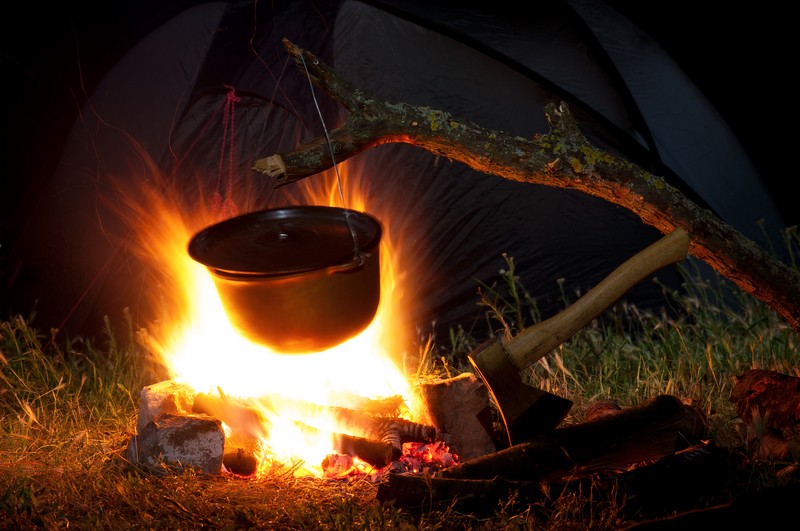This list covers the bare basics of water, food, first aid, and lighting. The list isn't a complete guide, but it does provide a starting point.
Now let's get right to the good stuff!
Water
One of the easiest ways of ensuring that water is safe to drink is with normal household bleach. Eight drops of bleach per gallon will purify it. Just mix it in and allow it to sit for 20 minutes. Bleach is chlorine, which is the same chemical that city water authorities use to purify water.
About the only natural water that you can count on being safe to drink is rainwater. But that’s only if you can capture it in a rainwater capture system that you know hasn’t been used as a latrine by the birds. Don’t trust water that has fallen on your roof, as you can be sure that the local bird population has visited there.First-Aid
Looking at basic wound treatment, the first thing needed is something to clean out the wound. This is normally done with purified water and an irrigation syringe. If you have water that is clean enough to drink, then you have water that is clean enough to irrigate a wound.
Of course, alcohol can be used for cleaning the wound as well. For centuries, people have used wine, whiskey and any other alcoholic beverage, in place of rubbing alcohol.
If you don’t have any antibiotic cream to put on the wound, use crushed garlic. Garlic is a powerful natural antibiotic and antifungal, and most people have it. Garlic powder will work as well, although garlic salt is not a good idea, as it will sting greatly.
As for bandages, almost anything will work. In olden times, they took scrap cloth and boiled it to sterilize it. That still works today, as boiling kills those microscopic pathogens we’re concerned about. For that matter, if you have to sew up the wound, you can use a normal needle and thread, as long as it has been boiled.
Food
We are surrounded by plants, many of which can be perfectly fine to eat. The problem is identifying which ones can be eaten and which ones can’t. However, there is an actual procedure which can be used for determining which plants are safe to eat. It requires one member of your party being willing to try the plant and is time consuming, so you want to make sure you do it with plants that you have a lot of.
Before trying this test, one should abstain from eating or drinking anything but purified water for eight hours. That will help isolate any symptoms, proving that they came from the plants being tested. Nothing but those plants should be eaten during the testing process.
Visually inspect the parts of the plant, looking for evidence that insects have been eating it, but have abandoned it. If they have abandoned it, there’s a good chance that the plant is rotten.
Check for contact poison by touching and then if there is no adverse reaction, rubbing the plant part on your skin. The best place for this is the inside of the elbow or wrist. Wait 8 hours for any sign of contact poisoning. Contact poisoning usually appears as a rash, such as caused by poison ivy.Cook a small portion of the plant part. Some plants are only poisonous raw, so it is safer to test it cooked. Of course, if you can’t cook it, or cooking it would be impractical, such as in the case of berries and fruit, skip cooking it.
Test it on the lips by touching the plant to the lips for three minutes. The lips are the most sensitive skin area on the body, making them a great test for things like acids. If there is any burning, tingling or other unpleasant reaction, stop the test.
Place a small amount of the plant part on the tongue and leave it there, without swallowing, for 15 minutes.Chew the plant part and then hold it in your mouth, without swallowing, for another 15 minutes.
Surviving out in the wilderness isn't hard once you know how to take care of the basics and prepare for urgent situations. The more we can learn about the art of survival, the better.
For more on the errors a person should avoid when they're trying to survive, check out Survivopedia.
